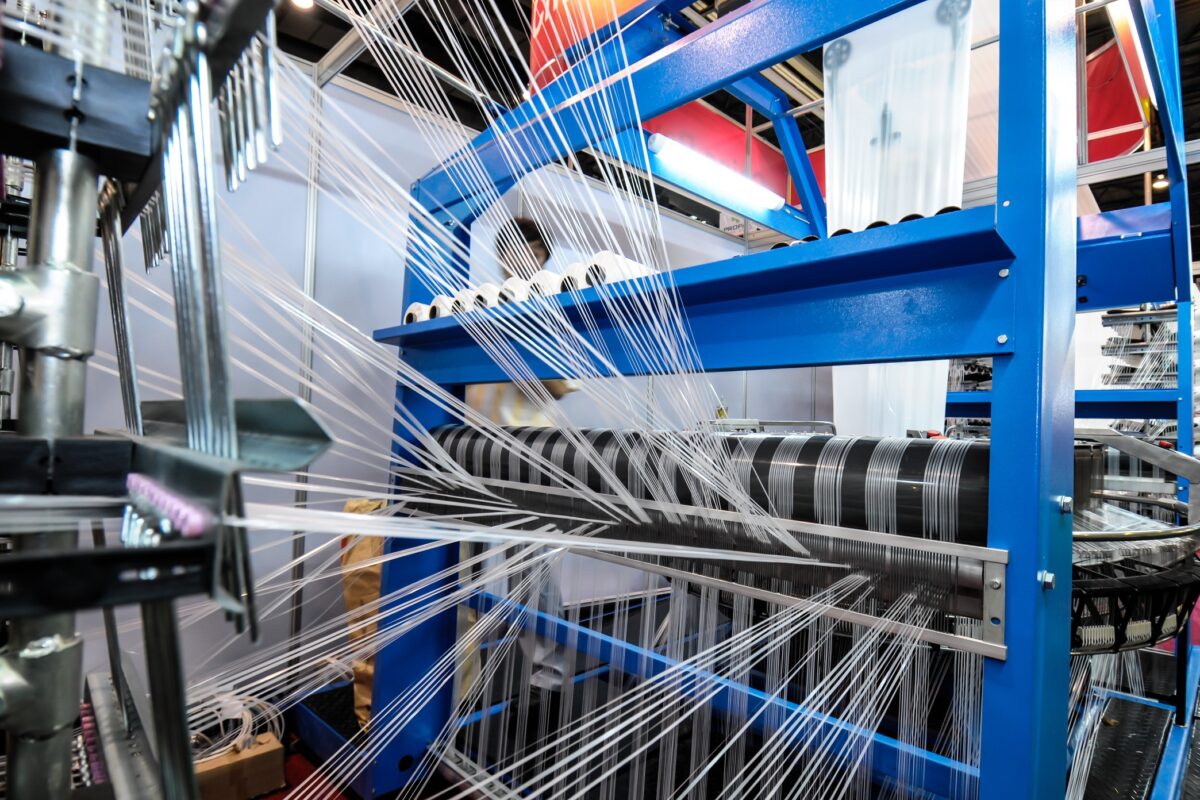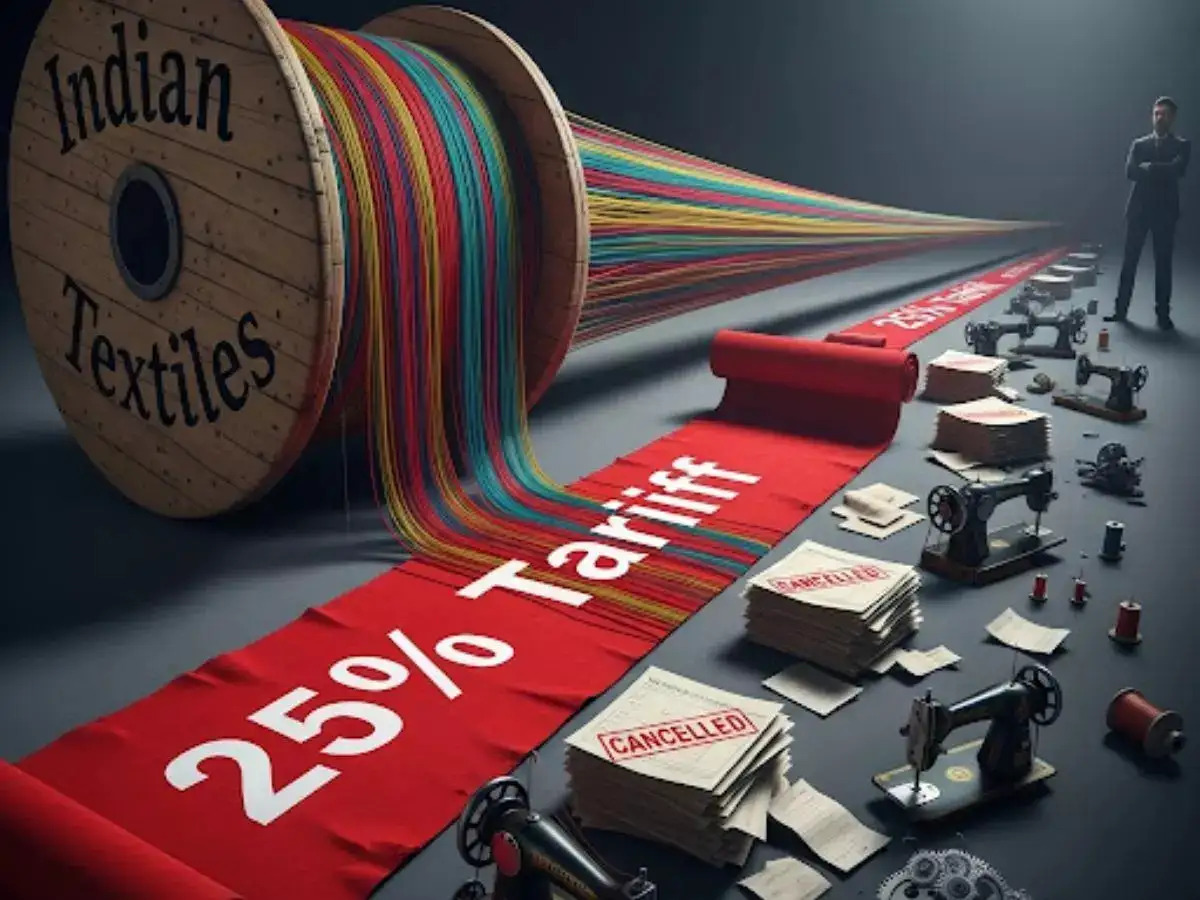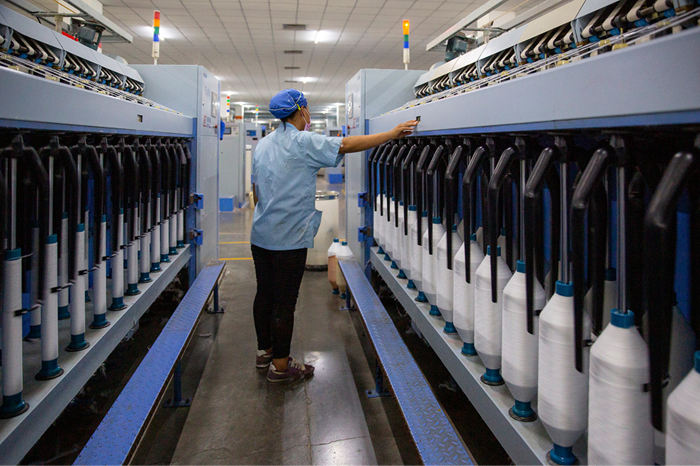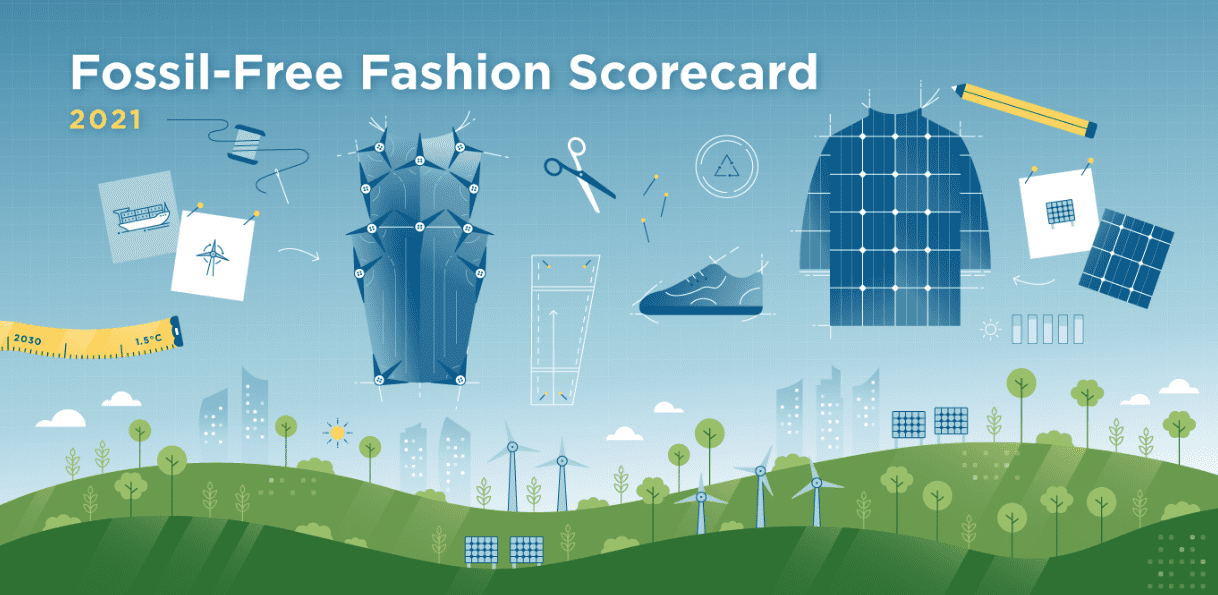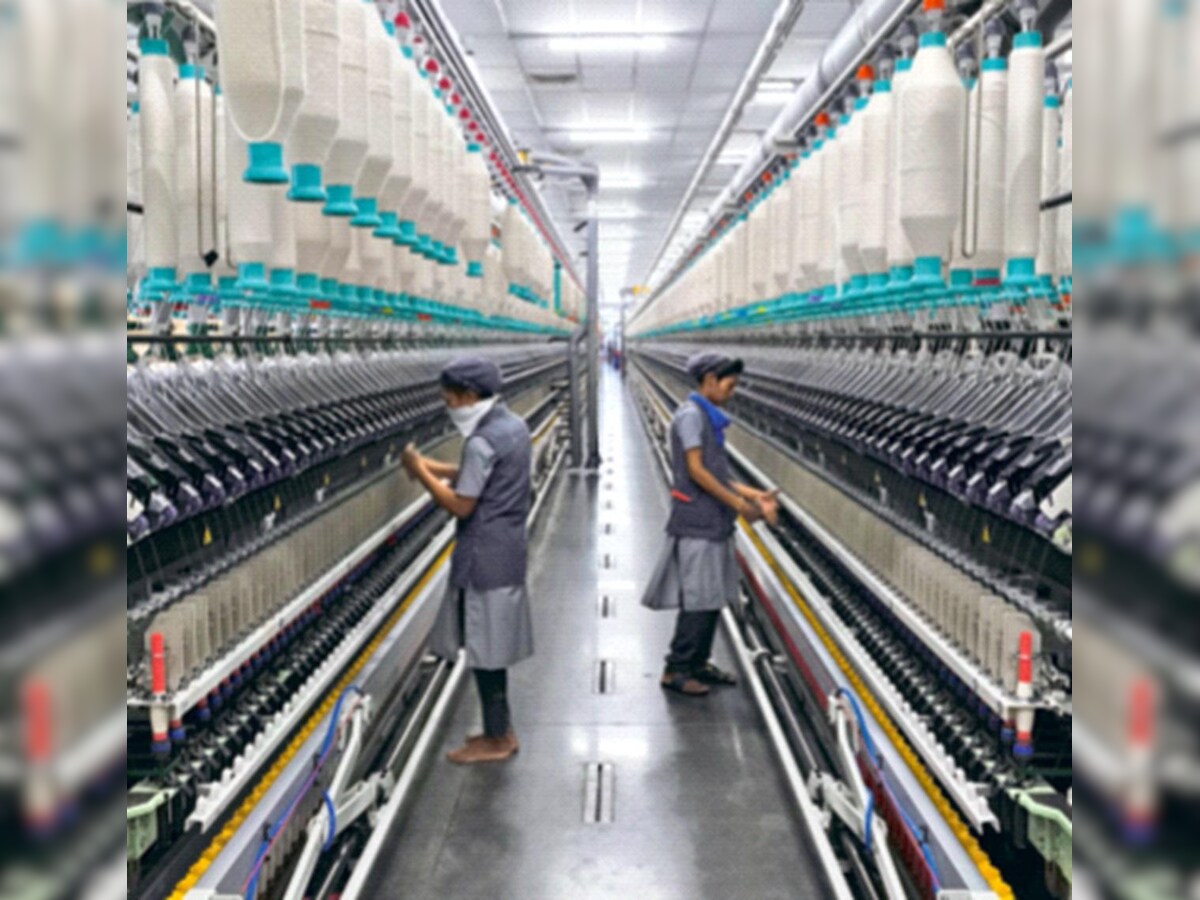FW
A global premium denim jeans market research says the trend of yoga pants like products is growing as 2020 forecasts say these products are in demand. Levi's has launched a new line of stretchy jeans and also opened new research lab to investigate new ways to make stretch pants to capture the market share, many other companies are in the same pursuit.
The analysts forecast global premium denim jeans market to grow at a CAGR of 8.09 per cent between 2016 and 2020. According to the premium denim jeans market report, one driver that will lead to the growth of this market is the preference for recycling jeans from plastics and other materials.
Sustainable jeans are not only a concept for the developed nations but are also gaining prominence in developing countries including India and China. Indian designers have developed eco-friendly denim that is manufactured using 100 per cent organic cotton without using bleach. One such example is its label 11.11.
Asia-Pacific (APAC) will be the fastest growing premium denim jeans market during the estimated period. In this region, China will emerge as the key revenue contributor to the region's market. The widespread availability of premium denim jeans has resulted in the momentous growth of the market, especially through online sales channels.
Factors such as the increasing penetration of premium denim jeans brands and their rising awareness among consumers are also driving the prospects for market growth in the region. Skinny jeans constitute the highest selling segment in the market due to their comfortable material, which allows flexible movement and versatility.
The women's premium denim segment dominated the global premium denim jeans market and will retain its dominance over the predicted period. Individuals belonging to the age group of 18-34 years are the primary consumers of premium denim jeans. Women customers follow the style trends through magazines and social media and perfect fit and style are the major factors that drive these fashion conscious shoppers. The introduction of four-way stretch, softer cotton, and other unique features such as heat teach, anti-odor, and windproof lines in denim jeans will attract more female buyers over the next four years. The following companies like LVMH, Gap, Kering, PVH, Levi Strauss, VF, Armani Exchange, Citizens of Humanity, Dkny Jeans, DL 1961, Differential Brands, Naked and Famous Denim, Paige Denim, Guess and William Rast are the key players in the Global Premium Denim Jeans Market.
The Economic and Technical Cooperation Agreement (ETCA) between India and Sri Lanka will be signed by the end of this year, said Ranil Wickremesinghe, prime minister of Sri Lanka. He also stated that the governments of the two countries were working to expand the India-Sri Lanka Free Trade Agreement to include services and investment as well.
The ETCA is expected to promote growth of up to $500 billion within the sub-regional economy. It will also help Sri Lanka get wider access to the rapidly growing Indian market. The announcement to sign the ETCA, which has been under negotiation for some time now, was made by the country’s prime minister at the Inaugural Plenary at the India Economic Summit organised by the Confederation of Indian Industry (CII) and the World Economic Forum (WEF) in New Delhi.
Sri Lanka was in the process of negotiating Free Trade Agreements with several countries. India would have access to not only the Sri Lankan market but also to markets in Singapore, Japan and China after these agreements came into play. Wickremesinghe also invited Indian companies to invest in various sectors in his country as he aims to convert it into a logistic, finance and business hub of South Asia.
More than 60 delegates representing cotton textile professionals in India attended an invitation-only on Cotton USA seminar in Mumbai recently. The seminar was meant to explore how in these changing and challenging times, cotton can have an increased importance in the textile value chain.
In his keynote address on Growing the Passion and Spinning the Fashion, B.K. Patodia, chairman of GTN Textiles Group highlighted on how the success story of cotton primarily comes from the strong linkages between passionate cotton farmers who have passed on a legacy and the spinning mills that have catered to the ever-changing needs of fashion through their innovative approach in spinning. Supima President and CEO Marc Lewkowitz gave an update on Supima production and consumption. He also shared the experience of brands using Supima and how the brand is making stronger inroads within the premium clothing value chain.
Founder member of e-tailing India Ashish Jhalani gave insights on the e-commerce business in India with a special focus on fashion e-tailing and how it’s reshaping the fashion space. Sean Callanan (CCI Manager of Europe, South Asia and Africa), provided updates on U.S. cotton acreage, production and projected exports as well as the latest information regarding the same data points for global cotton. The seminar also offered an opportunity for textile manufacturers and retailer and brand sourcing experts to discuss the benefits of increased collaboration through the panel discussion on Raw Material Planning in today’s Dynamic Consumer Environment.
Representatives of more than 20 prominent textile mills attended, the seminar along with 12 Cotton USA licensees like Raymond, Vardhman, Welspun, Trident, GTN Textiles, Ambika, Morarjee, Brandix, SA Aanandaan, Pee Vee Textiles, Ramco Group Textiles and Arun Textiles). Other than these leading domestic apparel brands such as Madura Lifestyle and Raymond, and the international brand Ralph Lauren also participated.
Cotton Council International (CCI) Executive Director Bruce Atherley offered an update on CCI’s promotion of U.S. cotton worldwide and encouraged the multi-national cotton fraternity to think innovatively to bring cotton to the forefront. Cotton USA licensees shared their candid views on using U.S. cotton and other growths in terms of cotton quality and performance during the panel discussion title What Delights Indian Spinners.
"75 top-end exhibitors gather up in Shanghai at Milano Unica Pavilion to showcase their fashion prowess in Hall 6.2, inside SalonEurope Shanghai. Bringing in new consumption pattern and evolving consumer tastes, this pavilion infuses freshness into the entire trade show."

75 top-end exhibitors gather up in Shanghai at Milano Unica Pavilion to showcase their fashion prowess in Hall 6.2, inside SalonEurope Shanghai. Bringing in new consumption pattern and evolving consumer tastes, this pavilion infuses freshness into the entire trade show.
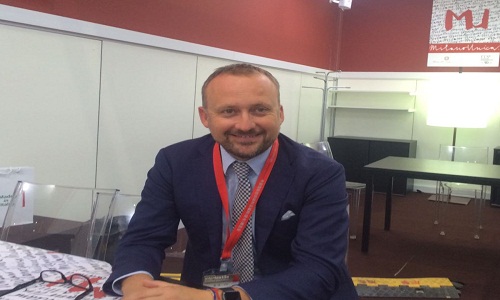
Amid global uncertainties and a falling GDP, China continues to hold nearly half the global luxury market, because of the growing purchasing power of the consumers. Chinese fashion market is witnessing a sea change. Till now, luxury goods were considered a symbol of wealth and status, today it’s all about enhancing experience. The shift has been brought by the so-called millennials, who are educated, well-travelled and tech-savvy, who have absorbed luxury since childhood from their parent’s generation and are now looking for niche high-end and bespoke products.
“The 10th edition of Milano Unica China confirms the strategic importance of made in Italy in this country. We thank the Italian Ministry of Economic Development and ITA (Italian Trade Agency) for making it possible through their economic and organizational support. I also wish to empasise that beyond the menswear textiles, MU China has provided a strong womenswear offer since the beginning and this sector is undergoing the fastest-growing increase in the Country,” says Ercole Botto Poala, President, Milano Unica.
“75 exhibitors feature the F/W 17-18 top-end collections between October 11-13 fair days at Mu China Pavilion and the selected clients’ choices will be guided by the traditional a much appreciated Trend Area located inside the Pavilion of beauty and culture,” states Massimo Mosiello, General Manager of the exhibition.
On asking about the reduced number of exhibitors, Paola says, “I agree that during this edition, the number of exhibitors is much lesser than earlier editions of Intertextile Shanghai edition. This is primarily because many of the earlier exhibitors are not repeating either because they have already got their buyer network done or they are not big enough to keep investing repeatedly as it is not just exchanging business cards, making final business is important, which is not happening very fast. Secondly, with earlier editions of participation of Milano Unica in Intertextile has resulted into many buyers visiting Milano Unica show in Milan earlier this September. Hence, those exhibitors who have already done business with their Chinese buyers have not participated.” Elaborating further, he adds, “I don’t think the number would now ever increase much, unless this exhibition is held in mid-September as business cycles and season requirements are changing quite fast. However, we are happy to note that the bilateral ties between Italy & China are improving.”
Next Milano Unica appointment will be hosted in Milan, at Fieramilano RHO, between February 1-3. With the change in month, Milano Unica F/W edition will be held in July, instead of September from 2017.
High-end streetwear helped boost global sales of luxury personal goods by 5 percent this year to an estimated €263 billion. While streetwear has proven to bring the next generation of consumers into the luxury fold, it is a double-edged sword.
Luxury brands are adapting to changing times and striving to connect with a younger and diverse customer base, grooming the next generation of loyal luxury customers.
Luxury brands and retailers are establishing exclusive design and marketing collaborations with streetwear labels, hip-hop and rap recording artists and entertainers, and fashion and social media influencers.
Several luxury goods labels have profited from hip-hop and streetwear-inspired collections over the past few seasons. Multiple luxury fashion houses, as well as the Louis Vuitton and Givenchy brands, have been partnering with streetwear brands and introducing sneaker- and streetwear-inspired products.
Multiple luxury fashion houses, as well as the Louis Vuitton and Givenchy brands, have been partnering with streetwear brands and introducing sneaker- and streetwear-inspired products.v
Louis Vuitton partnered with the Supreme skateboard brand on a design collaboration that apparently generated €100 million ($117 million) in sales. The collection, which was sold in pop-up stores in major cities worldwide in June 2017.
According to the report the luxury goods companies will increasingly need to innovate and keep up with millennial and Gen Z trends in order to capture and grow sales among the younger generations. The historically conservative luxury goods industry is striving to attract a more diverse and younger client base.
Weaving two types of specially designed fibres with cotton yarn and conductive copper-coated threads, a team of researchers from China and Singapore has devised a smart fabric that can both extract energy from light and store it as a super capacitor would do. As its main threads (used as flying shuttle), the textile combines fibre-shaped photo-anodes interlaced with counter electrodes (CEs) for the energy harvesting functionality, with TiN nanowire-based fibre super capacitors (FSCs) for the part of energy storage.
The paper "Tailorable and Wearable Textile Devices for Solar Energy Harvesting and Simultaneous Storage" published in the ACS Nano journal details the fabrication process of both types of specialty threads as commercially viable for production in any length. The best thing about this textile is that it can be woven with both threads side-by-side in any proportion offering the right balance between energy harvesting and energy storage based on the end applications envisaged.
What's more, the textile can be tailored into any shape while still retaining its overall solar energy harvesting and storage capabilities. Two equal parts of a fabric cut in half providing each roughly half the energy harvesting and energy storage capacity of the integral fabric (as long as the threads' extremities are reconnected in some way to build up functional modules in series or in parallel). In fact, every individual “thread” (FSC, fiber-shaped DSSC photoanode and CE) can be cut while retaining its functionality.
To prove their idea, the researchers weaved a palm-size sample that could be fully charged to 1.2V in 17s by self-harvesting solar energy. It fully discharged in 78s at a discharge current of 0.1mA.
The TiN nano wire-based fibre super capacitors (FSCs) were obtained starting with a Ti wire roughly 250μm in diameter. The titanium wire undergoes an alkali hydrothermal treatment and a further ion-exchange process to obtain H2Ti2O5•H2O nanowires on its surface, about 100nm in diameter.
Vide a notification dated October 7 of the Ministry of Labour and Employment, a Fixed Term Employment has been introduced in Apparel Manufacturing sector in Industrial Employment (Standing Order) Act. The decision would facilitate employment of workers in Apparel manufacturing on fixed term basis in the backdrop of seasonal nature of sector and would also ensure same working conditions, wages and other benefits for fixed term employee in the sector as a regular employee. It is thus win - win situation for both employer's and employees in Apparel manufacturing sector.
The Industrial Employment (Standing Orders) Act, 1946 requires employers to define conditions of employment in their industrial establishments. The item one of the schedule to the Act classifies the workman (a) Permanent (b) Temporary (c) Apprentice (d) Casual (e) Probationer (f) Badlis. The list in this schedule is not exhaustive. The nature of industrial establishments may be a factor to decide the classification of the workmen.
The concept of Fixed Term Employment defines the tenure of employment as well as other associated conditions of service and remunerations which are provided to regular employees under various labour laws. Fixed term employment was defined as a workman who is employed on a contract basis for a fixed period. Thus the services of workman will be automatically terminated as a result of non renewal of the contract between the employer and the workman concerned.
Separation of service of a workman as a result of non renewal of the contract of employment between the employer and workman concerned shall not be construed as termination of employment. This step would ultimately benefit the workers as their working conditions would be at par with the regular employees including social security and other benefits. It would, on the one hand provide flexibility to the employers and on the other hand improve the working conditions of the workers already working for some fixed tenure only by way of contracts. Experts say that it is a win-win situation for both worker and employer as on one side it provided flexibility for employing workers as per the demands of the market while on the other it ensures that worker hired gets equal benefits and working condition at par with the permanent employee.
Growth in Bangladesh’s apparel exports to the United States dropped below one per cent during the first eight months of the current calendar year over the corresponding period of 2015.
The country's exports grew by 0.85 per cent while its one of the main competitors, Vietnam, posted a 3.04 per cent growth. Export earnings grew by 10.99 per cent in January and 8.52 per cent from January to February 2016.
Exports of Bangladesh’s non-apparel items, including shrimp and plastic products, also declined by 6.88 per cent.
During the same period, Chinese apparel exports to the US also witnessed a negative growth of 7.73 per cent. Readymade garment exports from India slightly maintained growth by 0.06 per cent while Cambodia’s exports declined by 14.76 per cent.
A downturn in the US demand for apparels might have slowed down the country’s imports not only from Bangladesh but also from other countries.
Orders from China are shifting to Vietnam, which has developed its strength in producing non-cotton items. Efficiency is higher in Vietnam compared to Bangladesh.
Though India, Vietnam and Bangladesh produce almost the same products, Vietnam produces some value-added products.
Bangladesh is trying for a resumption of GSP but the US is insisting on further improvements in workplace safety and the labor rights situation in the export industry.
Launched in 2011 by six leading brands, Zero Discharge of Hazardous Chemicals Program now consists of 22 signatory brands, eleven value chain affiliates and four associates. Contributors include apparel and footwear companies such as Burberry, Benneton, Gap, H&M, Inditex, Marks & Spencer, Nike, Puma and Adidas.
The program envisions widespread implementation of sustainable chemistry to protect consumers, workers and the environment. It aims to harmonise standards across the textile and footwear value chain (including leather) to support safer chemical management.
A key component of the program is its manufacturing restricted substances list, which restricts the use of hazardous chemicals used across the manufacturing process.
Among members are Adidas, Nike, Levi Strauss, Puma, C&A, Esprit, G-Star Raw, H&M, Inditex, Jack Wolfskin, Li Ning and New Balance.
Four new members are Netherlands based leather chemical manufacturer Stahl, leather manufacturer PrimeAsia, ADEC Innovations (an impact investing company that designs, develops and delivers diverse data management and technology solutions) and Lanzhou Ketian New Materials (a leading supplier of Chinese waterborne synthetics).
The program has completed chemical use and management surveys and wastewater testing for approximately 150 substances at 20 facilities in Bangladesh, China, India, Taiwan and Vietnam. It’s working on compiling information on chemicals used in the textile industry.
Chinese small and medium enterprises are keen to set up manufacturing bases in India and Bangladesh to take advantage of lower labor costs. These are mainly original equipment suppliers, which do not have their own brands.
As part of a pilot research they have visited West Bengal, Assam, Orissa and Telengana to explore opportunities. Businesses they are particularly interested in are textiles and garments, furniture, plastics, machinery, household items, and electronics.
Apart from taking advantage of lower labor costs, they feel they can market their products domestically and export to other markets. Chinese companies are particularly keen to engage with small and medium enterprises as they need linkages unlike big companies which can find their way anywhere.
If the production data of textiles are any indicator, India has a great potential for collaboration with Chinese companies. China accounts for nearly ten times the textile business generated in India.
Chinese investments in India grew six-fold in 2015 from the previous year while more investments are in the pipeline following easing of restrictions on Chinese firms and favorable tax rates.
India has liberalised the investment climate for Chinese investors by removing visa and security restrictions. The bilateral trade deficit is in favor of China.




